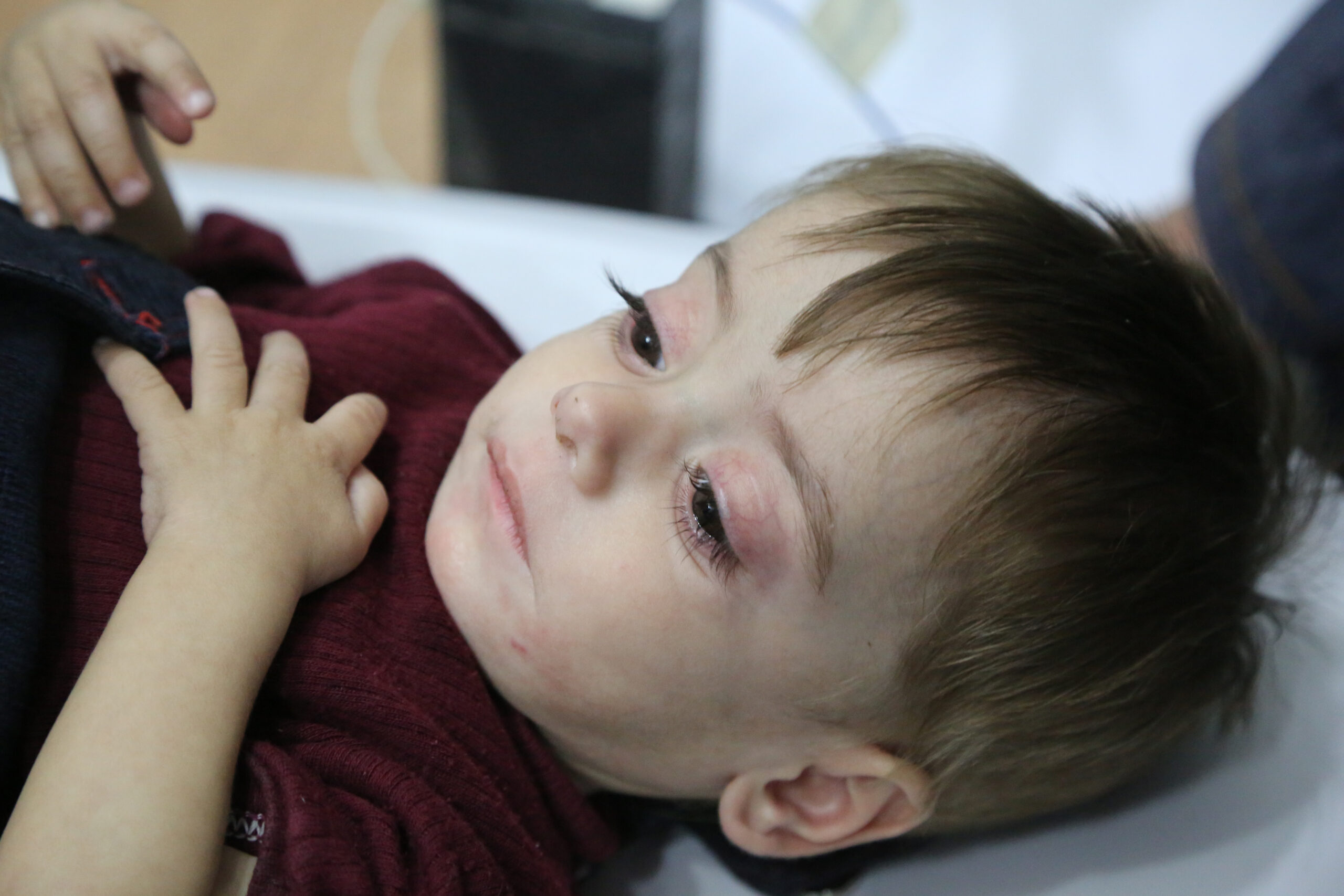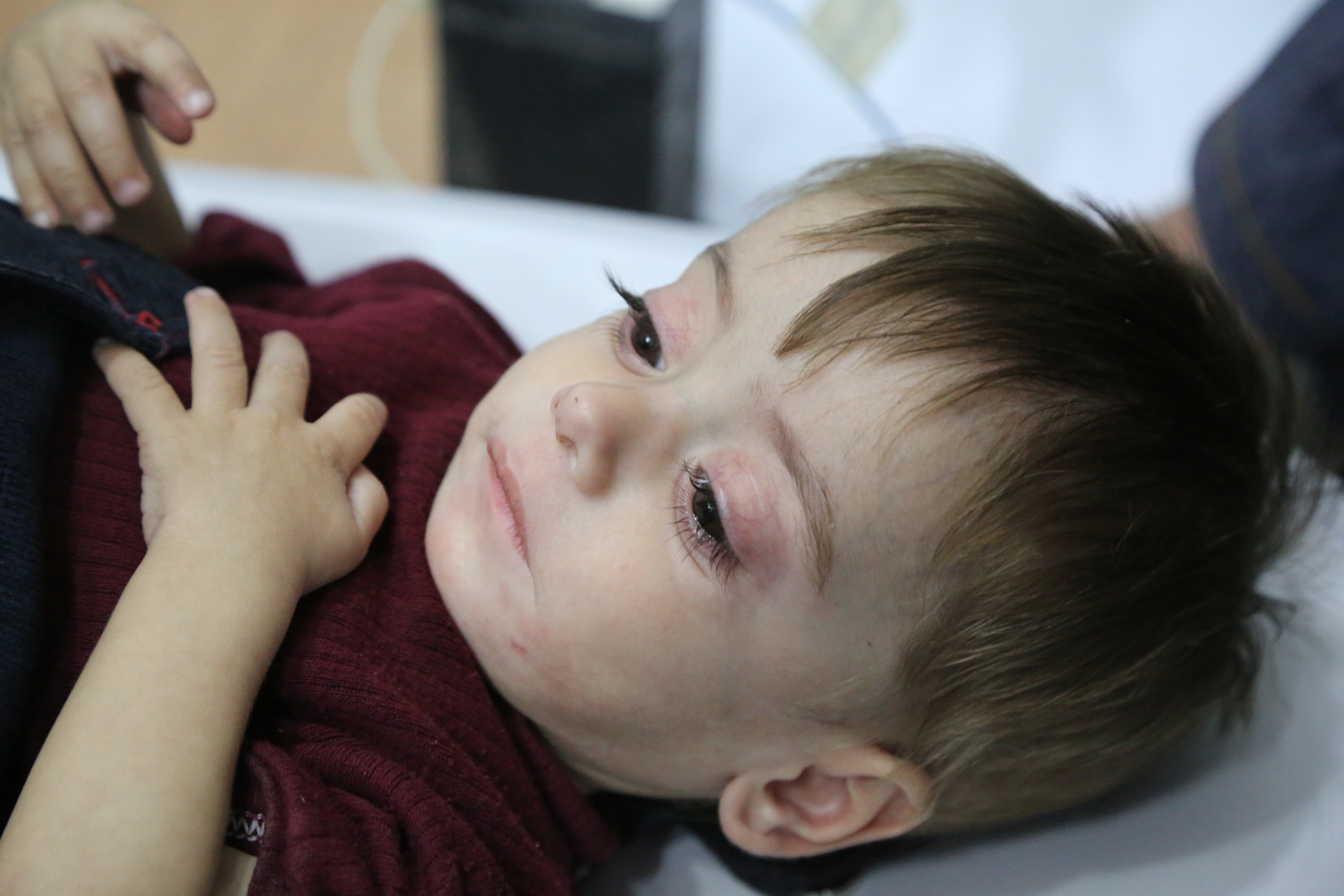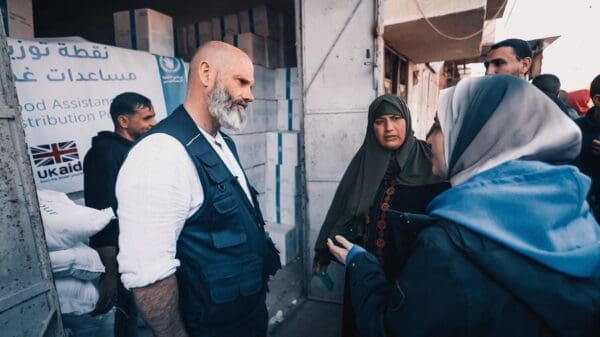
Hunger Crisis Worsens in Syria
Saleh, who lives in Eastern Ghouta on the suburbs of Damascus, is severely malnourished. Only weighing 12 pounds, he is half the healthy weight for a baby his age. He only eats watery vegetable soup because milk is too expensive.
Saleh is one of many hungry children trying to survive in Syria. In what has become one of the deadliest conflicts of the 21st century, the Syrian civil war is all that some of these children have ever known. And for those children and families trapped in areas under siege by warring factions inside the country, a new WFP report finds that many are fainting from hunger in school while their families look through garbage to find food.
“The situation is anticipated to deteriorate further in the coming weeks when food stock is expected to be totally depleted and household coping strategies will be highly eroded as a result,” the newly released report said.

Weighing a little over 12 pounds, about half the healthy weight for babies his age, Saleh suffers from severe acute malnutrition. He only eats watery vegetable soup because milk is too expensive, even when it is available in the market.
In Syria, nearly 3 million people like Saleh are living in hard-to-reach areas, including 420,000 people in 10 besieged areas. Men, women, and children in these besieged areas face severe problems in getting enough to eat as well as enough clean water for drinking and maintaining basic hygiene. So far in 2017, WFP took part in nine inter-agency convoys to Eastern Ghouta, delivering food assistance for 110,000 people in 13 locations in the besieged enclave.
However, WFP was forced to cut the number of people receiving food assistance in Syria from 4 million people to 3.3 million people this month. Without additional funding, the agency is planning to reduce the number of people it can help to 2.8 million people next month. To ensure that vulnerable families do not fall through the cracks, WFP is monitoring the situation to measure the impact of the reduction, while working with partners to put in place a feedback and complaints mechanism for Syrians affected by the reductions.
The total breakdown of infrastructure, local economies and supply chains caused by the civil war has forced WFP to re-imagine its entire operation — all while continuing to meet the urgent, life-and-death needs of people caught in conflict around the world. From providing locally produced date bars to helping set up communal kitchens and newly constructed greenhouses, WFP is taking an innovative, diverse approach to helping Syrian families and working to rebuild food supply chains from the ground up.
In 2017, WFP took part in more than 41 cross-line inter-agency convoys, delivering food assistance for 750,000 people in 85 hard-to-reach and besieged locations in Rural Damascus, Hama, Homs and Idleb governorates.
In addition, WFP runs activities to strengthen and protect livelihoods for more than 100,000 Syrians who struggle to produce or buy enough food. These projects include the restoration of agricultural infrastructure, the establishment of kitchen gardens to increase household food production, the rehabilitation of bakeries, and training in beekeeping and other skills.




